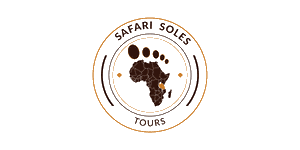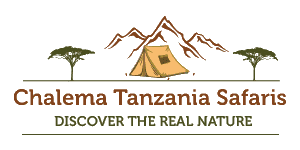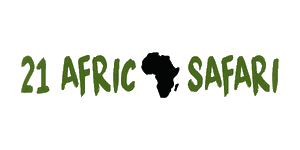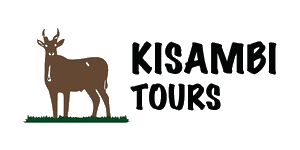Tour Length
Rates in USD $ – Change Currency
Per person, excl. international flightsOperator Rating
Other Tour Features
Filter by Operator
Filter by Accommodation
Mt Kilimanjaro Budget Climbing Tours
Africa's tallest mountain, Mt Kilimanjaro is a dormant volcano whose snowcapped Uhuru Peak towers to 5,895m/19,340ft above the low-lying plains of northeast Tanzania. A magnet for peak-baggers from all corners of the globe, it is also the highest mountain anywhere that can be summited by non-technical hikers without specialist equipment. Despite this, a Kilimanjaro mountain climbing tour is a major commitment that shouldn’t be undertaken lightly. It will require a minimum of 5 days, it exposes you to challenging altitudes and temperatures, and if you are at all budget conscious it’s bound to dent your wallet. The reward of a successful climb, however, is priceless: the profound satisfaction of standing tall on the iconic Roof of Africa.
-
Best Seller

8-Day Climbing Mount Kilimanjaro Through Lemosho Route
$2,196 pp (USD)
Tanzania: Private tourBudgetMountain Hut & Camping
You Visit: Arusha (Start), Mt Kilimanjaro, Arusha (End)

Life Journey Experience
5.0/5 – 26 Reviews
-

12-Day Combo Mount Kilimanjaro & Tanzania Safari
$2,750 pp (USD)
Tanzania: Shared tour (max 7 people per vehicle)BudgetCamping & Hotel
You Visit: Moshi (Start), Mt Kilimanjaro, Tarangire NP, Ngorongoro Crater, Moshi (End)

MJ Safaris & Adventure
4.8/5 – 53 Reviews
-

6-Day Kilimanjaro Climb Rongai Route
$1,859 pp (USD)
Tanzania: Shared tour (max 10 people per group)BudgetMountain Hut & Camping
You Visit: Moshi (Start), Mt Kilimanjaro, Moshi (End)

Zara Tours
5.0/5 – 91 Reviews
-
Top Rated Operator

7-Day Mount Kilimanjaro Lemosho Route Trek
$2,497 pp (USD)
Tanzania: Private tourBudgetCamping
You Visit: Arusha (Start), Mt Kilimanjaro, Arusha (End)
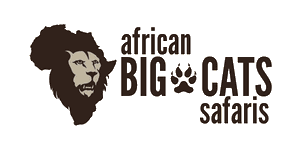
African Big Cats Safaris
5.0/5 – 625 Reviews
-
![7-Day Kilimanjaro Trekking Adventure via Lemosho]()
7-Day Kilimanjaro Trekking Adventure via Lemosho
$1,870 pp (USD)
Tanzania: Shared tour (max 6 people per group)BudgetCamping
You Visit: Arusha (Start), Mt Kilimanjaro, Mt Kilimanjaro Summit, Arusha (End)

Samora Explorers
5.0/5 – 99 Reviews
-
Top Rated Operator

10-Day Mount Kilimanjaro Trek (Lemosho Route)
$8,399 to $8,799 pp (USD)
Tanzania: Private tourBudgetCamping & Lodge
You Visit: Arusha (Start), Mt Kilimanjaro, Arusha (End)

Wayfairer Travel
5.0/5 – 202 Reviews
-
Top Rated Operator
![6-Day Kilimanjaro Trekking Marangu Best Route]()
6-Day Kilimanjaro Trekking Marangu Best Route
$1,708 pp (USD)
Tanzania: Shared tour (max 6 people per group)BudgetMountain Hut & Camping
You Visit: Moshi (Start), Machame Gate (Mt Kilimanjaro), Mt Kilimanjaro, Arusha (End)

Going Green Safari Tours
4.9/5 – 209 Reviews
-
Top Rated Operator
![5-Day Mt Kilimanjaro Hiking via Marangu Route]()
5-Day Mt Kilimanjaro Hiking via Marangu Route
$1,485 to $1,595 pp (USD)
Tanzania: Shared tour (max 7 people per group)BudgetMountain Hut
You Visit: Arusha (Start), Marangu Gate (Mt Kilimanjaro), Mt Kilimanjaro, Uhuru Peak (Mt Kilimanjaro), Arusha (End)

Gamedrive Travel Africa Safari Agency
5.0/5 – 656 Reviews
-
![7-Day Amazing Climb via Machame Route with Local Guides]()
7-Day Amazing Climb via Machame Route with Local Guides
$1,715 pp (USD)
Tanzania: Shared tour (max 7 people per group)BudgetCamping
You Visit: Moshi (Start), Machame Gate (Mt Kilimanjaro), Mt Kilimanjaro, Uhuru Peak (Mt Kilimanjaro), Mweka Gate (Mt Kilimanjaro), Moshi (End)

Kilimanjaro Heroes Adventures
5.0/5 – 47 Reviews
-
Top Rated Operator
![3-Day Tarangire, Ngorongoro and Kilimanjaro Hike]()
3-Day Tarangire, Ngorongoro and Kilimanjaro Hike
$715 pp (USD)
Tanzania: Shared tour (max 7 people per vehicle)BudgetLodge & Hotel
You Visit: Arusha (Start), Tarangire NP, Ngorongoro Crater, Mt Kilimanjaro, Arusha (End)

Go Serengeti African Tours
4.9/5 – 433 Reviews
-
Top Rated Operator
![9-Day Kilimanjaro via Lemosho Route]()
9-Day Kilimanjaro via Lemosho Route
$2,695 pp (USD)
Tanzania: Shared tour (max 9 people per group)BudgetCamping & Hotel
You Visit: Arusha (Start), Mt Kilimanjaro, Arusha (End)

Safari Soles
5.0/5 – 439 Reviews
-
![5-Day Safari and Mount Kilimanjaro Adventure]()
5-Day Safari and Mount Kilimanjaro Adventure
$1,000 pp (USD)
Tanzania: Shared tour (max 7 people per vehicle)BudgetCamping & Hotel
You Visit: Arusha (Start), Tarangire NP, Serengeti NP, Ngorongoro Highlands, Mt Kilimanjaro, Arusha (End)

Go Makini Tanzania Expedition
4.9/5 – 123 Reviews
-
![8-Day Mount Kilimanjaro - Machame Route]()
8-Day Mount Kilimanjaro - Machame Route
$3,025 to $3,080 pp (USD)
Tanzania: Private tourBudgetCamping & Lodge
You Visit: Arusha (Start), Mt Kilimanjaro, Kilimanjaro Airport (End)

Kojuu Safaris Africa
5.0/5 – 97 Reviews
-

9-Day Kilimanjaro Expedition via Machame Route
$2,904 to $3,351 pp (USD)
Tanzania: Private tourBudgetCamping & Hotel
You Visit: Moshi (Start), Mt Kilimanjaro, Kilimanjaro Airport, Moshi (End)

Altezza Travel
5.0/5 – 84 Reviews
-
![6-Day Kilimanjaro via Rongai Route]()
6-Day Kilimanjaro via Rongai Route
$1,780 pp (USD)
Tanzania: Private tourBudgetCamping
You Visit: Moshi (Start), Mt Kilimanjaro, Uhuru Peak (Mt Kilimanjaro), Moshi (End)

Genes Adventures
5.0/5 – 41 Reviews
-
![5-Day Marangu Route Hiking Mt Kilimanjaro]()
5-Day Marangu Route Hiking Mt Kilimanjaro
$1,485 to $1,595 pp (USD)
Tanzania: Private tourBudgetMountain Hut
You Visit: Arusha (Start), Mt Kilimanjaro, Uhuru Peak (Mt Kilimanjaro), Marangu Gate (Mt Kilimanjaro), Arusha (End)

Chalema Tanzania Safaris
5.0/5 – 67 Reviews
-
![6-Day Machame Climbing Route]()
6-Day Machame Climbing Route
$1,485 pp (USD)
Tanzania: Shared tour (max 6 people per group)BudgetCamping
You Visit: Moshi (Start), Machame Gate (Mt Kilimanjaro), Mt Kilimanjaro, Moshi (End)

Kili Vikings
4.9/5 – 40 Reviews
-
Best Seller
![5-Day Climbing Kilimanjaro via Marangu Route]()
5-Day Climbing Kilimanjaro via Marangu Route
$1,330 pp (USD)
Tanzania: Private tourBudgetMountain Hut
You Visit: Moshi (Start), Mt Kilimanjaro, Mt Kilimanjaro Summit, Moshi (End)

21Africa Safari
4.7/5 – 24 Reviews
-
![3-Day Kilimanjaro Hike via Marangu Route]()
3-Day Kilimanjaro Hike via Marangu Route
$770 pp (USD)
Tanzania: Private tourBudgetMountain Hut
You Visit: Moshi (Start), Mt Kilimanjaro, Marangu Gate (Mt Kilimanjaro), Moshi (End)

Kisambi Tours
4.9/5 – 39 Reviews
-
![8-Day Climbing Mountain Kilimanjaro Lemosho Route]()
8-Day Climbing Mountain Kilimanjaro Lemosho Route
$2,300 pp (USD)
Tanzania: Private tourBudgetCamping
You Visit: Arusha (Start), Mt Kilimanjaro, Arusha (End)

Pumba Reisen
5.0/5 – 10 Reviews
5 Questions About Mt Kilimanjaro Budget Tours

Answered by
Philip Briggs
Philip is an Africa-specialized travel writer who first visited Tanzania in 1986. He has returned on numerous occasions to research his Bradt Guide to Tanzania, which was first published in 1992 and will go into a 9th edition in 2023.› More about Philip
5 Questions About Mt Kilimanjaro Budget Tours
 Philip Briggs
Philip Briggs
Are affordable Mount Kilimanjaro climbing tours available?
“That depends on what you mean by affordable. The fixed costs associated with a 5-day Kilimanjaro climb add up to around US$800 per person and increase by US$170 to US$200 for every additional day on the mountain. This covers national park fees, plus guide, porter and cook wages. Because this baseline figure applies to all Kilimanjaro climbs, it means that the price variation between budget or upmarket tours is quite narrow. And while several budget companies do offer relatively cheap Kilimanjaro climbing tours, this tends to involve compromising the quality of equipment, food, guiding or other services. In other words, focusing too much on price when you look at a Kilimanjaro package can be a false economy because it might reduce your enjoyment of the holiday and lower the odds of summiting successfully.”
1What is the best route for a budget Kilimanjaro safari?
“If, by best, you mean the least expensive, then that would be the Marangu Route. This is the only Kilimanjaro ascent route that is regularly completed in 5 days, which saves on the additional park fees associated with a longer hike. Marangu is also the only route where mountain huts are available, so the operator can budget less on gear and porters. Having said that, while Marangu is the cheapest Kilimanjaro ascent route, it is also the most crowded. Furthermore, those who attempt to climb Kilimanjaro over 5 days have a lower success rate than those who allow 6 days or more. So, even if you are on a tight budget, there’s a strong case for booking a longer and slightly more expensive tour using another route. In that case, a 6-day hike on the Machame Route is generally the most affordable option, but the Lemosho Route, which usually takes 7 days, is quieter and more beautiful. If you climb during the rainy periods (November to December and March to May), the best option overall is the Rongai Route, which uses the relatively dry northern slopes.”
2How much does a budget Kilimanjaro climbing trip cost?
“The cheapest 5-day hikes on the Marangu Route start at around US$1,100 to US$1,300 per person, depending to some extent on group size. This should include all national park fees, guide and porter costs, camping gear and food, but it will exclude tips for the porters, cooks and guides. For a 6-day Kilimanjaro budget safari on the Marangu or Machame Route, you’ll be looking at around US$1,300 to US$1,500 per person. Expect to pay more for hikes that take 7 days or longer, or that follow quieter and more remote routes such as Rongai and Lemosho.”
3Where should I stay before and after climbing Kilimanjaro on a budget tour?
“The most popular places to stay before or after a budget Kilimanjaro climb are the towns of Moshi and Arusha. Both have a very good range of simple guesthouses, backpacker hostels and other budget-friendly accommodation options. Of the two, Moshi is closer to the base of Kilimanjaro. Staying here means you're more likely to get a view of the snowcapped peak and you have less distance to cover on the first day of your climbing tour. Arusha is about 2 hours’ drive farther from most of the Kilimanjaro trailheads, but it’s more convenient than Moshi if you will be heading off on safari after your climb. If you prefer a more rustic setting, accommodation is also available at Marangu and Machame (the starting point is for the ascent routes of the same name). But it tends to be pricier than the cheaper options in Moshi and Arusha.”
4Are there day hikes or other day trips available at the base of Kilimanjaro?
“Plenty of day hikes are available at the base of Kilimanjaro. If you don't plan on doing a full Kilimanjaro climb, an undemanding and recommended alternative is the Shira Plateau Trail System. This hike takes place at an altitude of 3,500m/11,480ft on the eastern slopes and often provides close-up views of the snowcapped peak. If you're looking for a warm-up prior to Kilimanjaro mountain climbing, a popular option is the short guided hike to the 80m/262ft Materuni Falls on the forested southern foothills. A more demanding goal for a day hike is Meru Crater in Arusha National Park. This crater forms part of Mt Meru, Africa’s fifth-highest massif, and the day hike climbs as high as 2,600m/8,530ft, providing good acclimatization for Kilimanjaro. (Even better for acclimatization is the full 2- to 4-day hike to Meru’s 4,566m/14,980ft peak.) Another popular day trip near the base of Kilimanjaro is a short safari to look for elephants, buffalos, giraffes and a wide variety of antelopes, monkeys and birds in Arusha National Park. Alternatively, you could swim in the crystal-clear Kikuletwa Hot Springs or book a cultural village visit in and around Machame or Marangu.”
5













